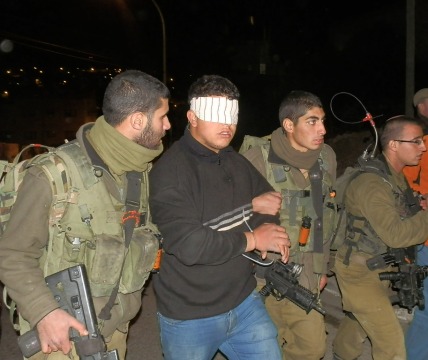Year: 2013
-
Viscous crackdown on unarmed protesters against the Prawer Plan just outside Ramallah
2nd December 2013 | International Solidarity Movement, Ramallah Team | Occupied Palestine Over 100 Palestinians and international activists took part in a non-violent demonstration on the 30th of November to protest against the Prawer Plan. The demonstration began at the al-Bireh municipality building in Ramallah and proceeded onto the Bet El settlement nearby. Demonstrators were met with stones then…
-
Daily brutality towards Palestinians in occupied Al-Khalil
2 December 2013 | International Solidarity Movement, Khalil Team | Hebron, Occupied Palestine Israeli forces regularly exercise brutal and irrational behaviour in the H2 area of Khalil (Hebron), which is under military control. An example of this treatment took place on Saturday 30th November, when 7 Israeli soldiers reacted to a group of Palestinian youth throwing…
-
Israeli army demolish a house in the Salfit village of Deir Ballut
29th November 2013 | International Solidarity Movement, Nablus Team | Deir Ballut, Occupied Palestine On Thursday morning at five am, the Israeli army demolished a house under construction, and left the area before the owner Ghaneem Mahmoud Abdullah Al-Karim or other villagers were able to arrive at the scene. It is believed that the Israeli…



